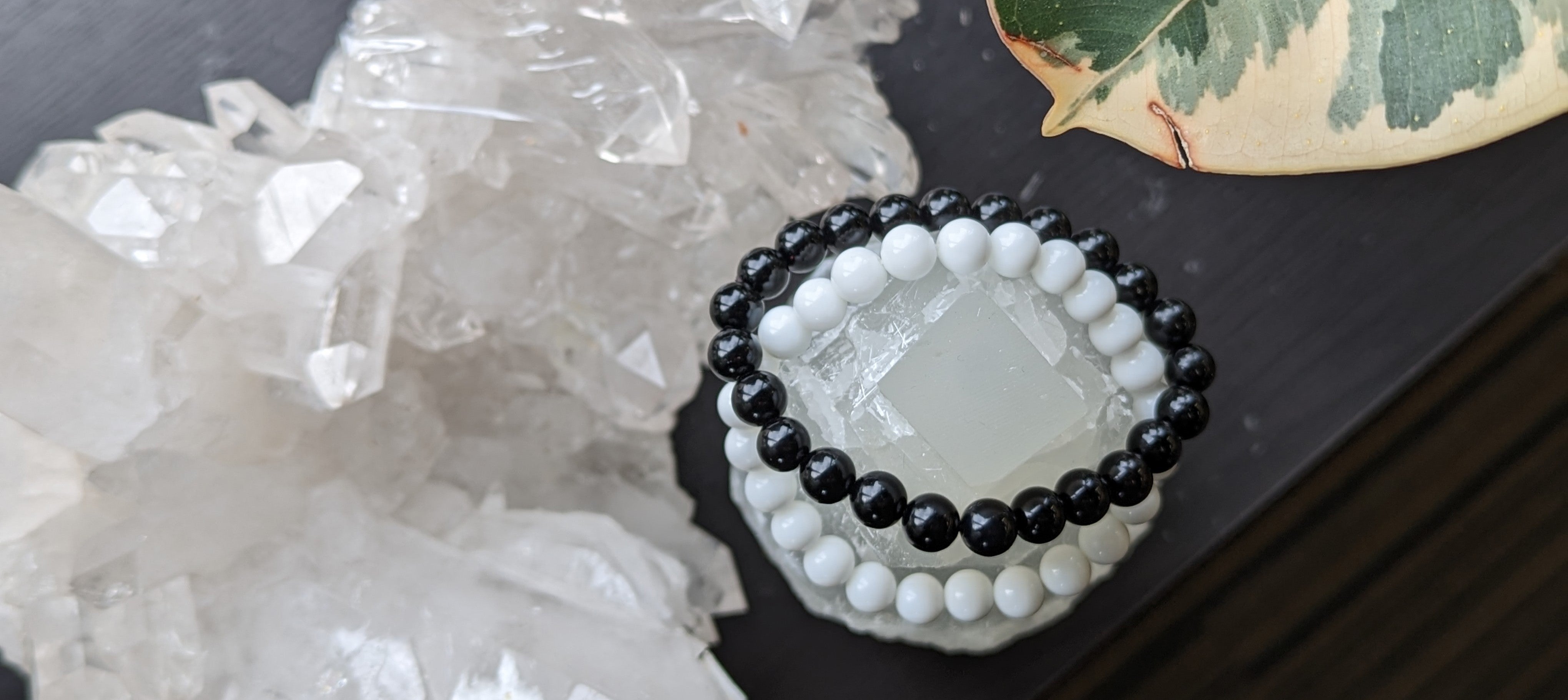Constant change – this is the term often associated with the Ammonite. The fossil's coil shape is a visual reminder for people to strive to become a better version of themselves. The Ammonite is also dubbed as an energy and healing fossil. It is believed to stimulate a person's life force. People also use it to siphon out negative energies dwelling within a space.
There's a lot of interesting information to be learned about this fossil, starting with its origin and history, and its properties and uses. Read on as we delve into them.
The Physical Properties of Ammonite
Ammonite fossils have a flat spiralling shell with grooves, ridges, and a wide chamber or opening called phragmocone. These fossils can be turned into crystalized stones called Ammolites through the process of compression and mineralization.
They come in a range of colours like brown, grey, beige, and white. Some Ammonite fossils have rainbow hues or patches of silver all over their bodies. The Ammonite has a Mohs hardness of 4 which means it can be scratched by a knife blade. It is commonly found in Brazil, Madagascar, and Morocco.
The History of Ammonite
The name ˜Ammonite' was inspired by the spiral shape of the fossilized shell, which look like the coiled horns of a ram. It was the natural philosopher Pliny the Elder who first called the fossil ammonis cornua (horn of Ammon), likening them to the horns of the Egyptian god Ammon.
Originally, Ammonite is a term used to refer to a sub-order of Ammonoids that lived during the Jurassic Period or about 201 million years ago. Ammonites existed in the seas before they became extinct and fossilized in marine rocks.
They are in the same family of cephalopods as the squid, octopus, cuttlefish, and the nautilus. Ammonites may appear small on the basis of their fossil sizes, but some of them grew to as big as 1.4 metres (4.5 feet) in diameter.
Ammonites lived through three mass extinction events before they were completely wiped out of the face of the earth, according to the National Geographic. They even survived the Permian extinction, a global warming phenomenon induced by a volcanic activity 252 million years ago which banished 96 percent of the earth's marine life.
Together with the dinosaurs, Ammonites became extinct at the end of the Cretaceous period. It was when a 7.5-mile-wide asteroid hit the earth and killed more than three-quarters of life forms on the planet.
Ammonite fossils were formed when dead Ammonites settled in the seabed and were buried by sediment. Over time, the chambers of the buried Ammonites' shells were filled with mineral deposits. This caused the shells to be intact. In some cases, the shells were dissolved and the mineral deposits produced a cast in the chambers.
Ammonite shells were made of the calcium carbonate Aragonite. Eventually, Aragonite turns into Calcite which is a more stable form of calcium carbonate. The dissolution of calcium carbonate minerals left a dent in the rock where the shell used to be, creating a cast.
The Lore of Ammonite
In ancient times, it is believed that the Greeks first utilized Ammonite in discus throws during the Olympics. In India, the fossil is known as a Shaligram or a sacred shell that symbolized the preserver god Vishnu. Ammonite was used in many religious ceremonies. In medieval Europe, the fossil was known as a ˜snake stone' that had curative properties against snake bites and poisons.
The fossil is also known as a harbinger of knowledge and wisdom. It is known to hold the energies and vibrations of the universe. As such, crystal healers and Feng Shui experts use the Ammonite to stimulate personal awakening and even to attract luck, fortune, and prosperity.
In Geology, Ammonites are used as index fossils. They assist in dating other fossils found in the same marine sedimentary rocks. Ammonites make for ideal index fossils since they can be found anywhere, and many of their species lived in different time periods. These fossils tell substantial information about ancient climates. Geologists use Ammonites to precisely distinguish intervals of geologic time.
The Metaphysical Properties of Ammonite
Being an ancient fossil, Ammonite is thought to carry ancient knowledge and wisdom of the Earth. It is said that gazing into its spirals can open a person's eyes to the origins of the Earth and the structure of the universe. The fossil may offer clarity of direction and structure to a person's life.
Ammonites are also useful in dispelling negative energies. You can use an Ammonite fossil to create a smooth flow of energy in your body, especially if you have depression, metabolism issues, or are going through labour pains. Ammolite stones are said to assist in deepening the meditative state, elevating the mood, and relieving trauma.
They are also a helpful guide for people turning a new chapter in life, or trying to improve themselves. Ammonites are believed to provide insight on what to do, where to begin, how to take a plan to completion, and how to realize one's vision.
Note: There is no scientific evidence that supports the effectiveness of mineral stones and crystals in treating ailments. All information published here is purely for educational purposes.
Scientists attribute the ˜healing impact' to the placebo effect that takes place when using stones and crystals. Holding stones and meditating with them is said to trigger the release of feel-good hormones (endorphins and dopamine) in the brain.
Sources:
Mckeever, A. (n.d.). What are ammonites, and how did they come to rule the prehistoric seas?. Nationalgeographic.com. Retrieved March 4, 2021, from https://www.nationalgeographic.com/animals/facts/ammonites
Magdalena, A. (November 14, 2019). Facts About Ammonite: Meanings, Properties, and Benefits. Gemstagram.com. Retrieved March 4, 2021, from https://gemstagram.com/facts-about-ammonite-meanings-properties-and-benefits/
Compound Interest. (November 29, 2017). How did ammonite fossils form? Compoundchem.com. Retrieved March 4, 2021, from https://www.compoundchem.com/2017/11/29/ammonites/
American Museum of Natural History. (n.d.). Ammonite. Amnh.com. Retrieved March 4, 2021, from https://www.amnh.org/exhibitions/permanent/grand-gallery/ammonite
British Geological Survey. (n.d.). Ammonites. Bgs.ac.uk. Retrieved March 4, 2021, from https://www.bgs.ac.uk/discovering-geology/fossils-and-geological-time/ammonites/?csrt=13951527176157070750#animal
Ammonoidea. (n.d.). En.wikipedia.org/. Retrieved March 4, 2021, from https://en.wikipedia.org/wiki/Ammonoidea





